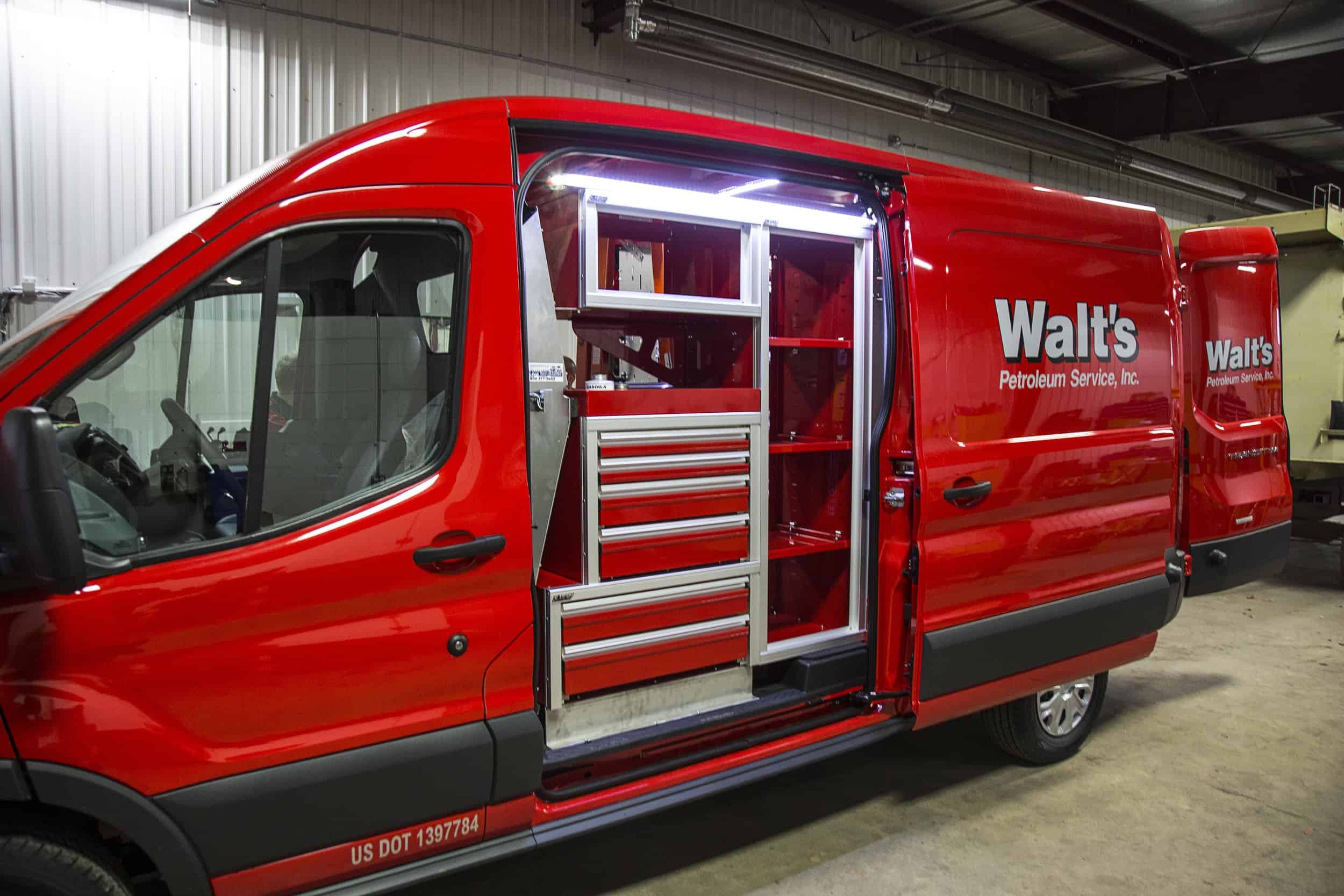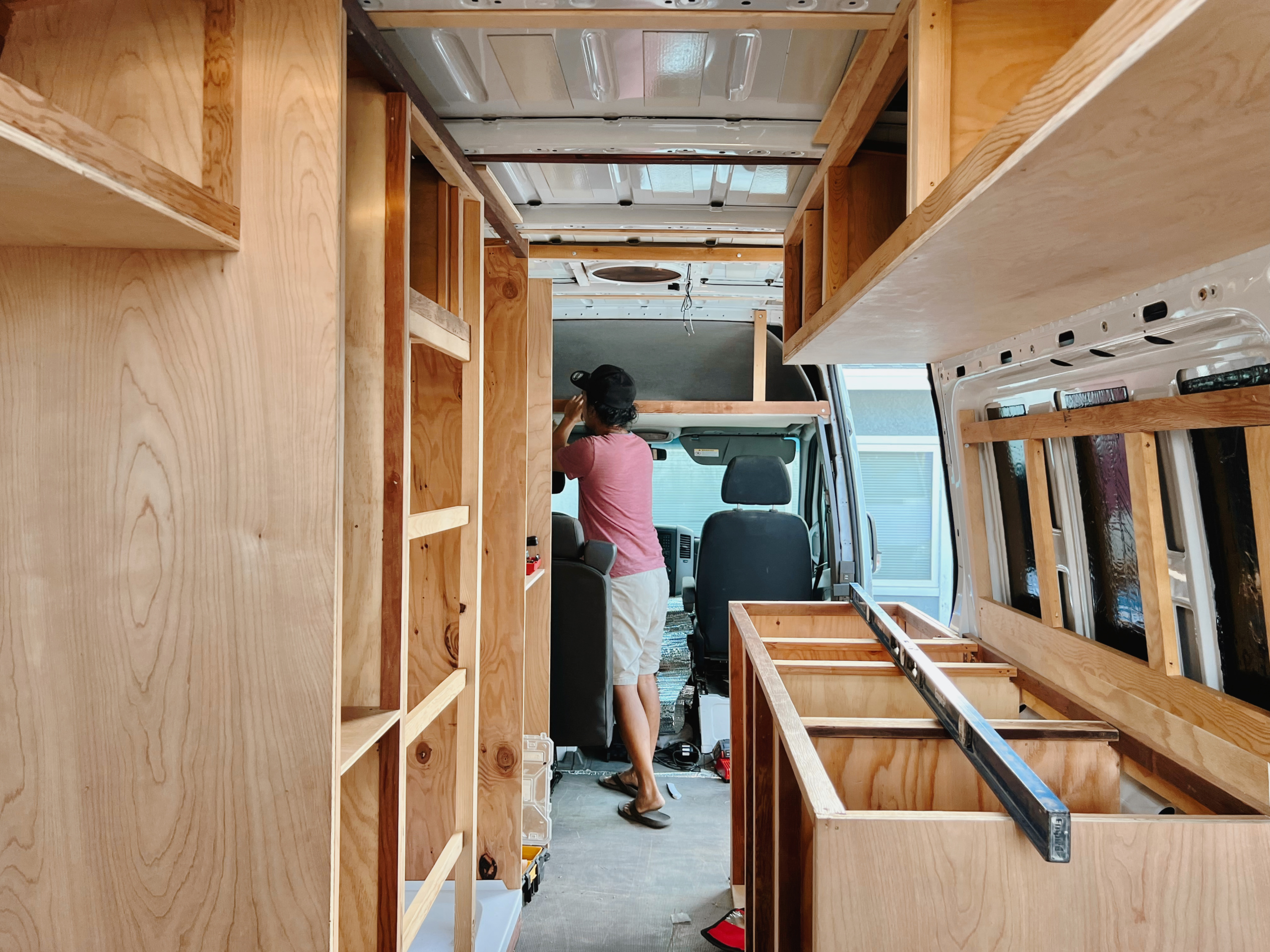Types and Styles of Vans Cabinets and Doors

Choosing the right cabinets and doors for your van conversion is crucial for both functionality and aesthetics. The materials, styles, and custom designs available offer a wide range of options to suit diverse needs and budgets. This thread explores the key considerations for selecting the perfect fit for your van build.
Materials Used in Van Cabinet Construction
The durability and longevity of your van cabinets heavily depend on the materials used. Popular choices include wood, metal, and composites, each with its own advantages and disadvantages. Wood, such as plywood or hardwood, offers a classic look and can be easily customized. However, it requires regular maintenance to prevent water damage and warping. Metal, typically aluminum or steel, is exceptionally durable and resistant to moisture, but can be more expensive and challenging to work with. Composites, such as high-pressure laminates (HPL) or melamine, offer a balance of durability and affordability, being resistant to scratches and moisture, but may lack the aesthetic appeal of wood.
Van Cabinet Door Styles
Different door styles offer varying levels of space efficiency and aesthetic appeal. Sliding doors are ideal for maximizing space in smaller vans, as they don’t require additional swing room. Hinged doors are a classic choice, offering easy access but requiring space to open. Bi-fold doors are a compromise, allowing for more compact opening than hinged doors while offering wider access than sliding doors. The choice depends on the available space and personal preference.
Examples of Custom Van Cabinet Designs
Custom van cabinet designs allow for tailored solutions to specific needs and van layouts. The following table showcases examples of unique features and functionalities achievable through careful planning and skilled craftsmanship.
| Style | Material | Features | Image Description |
|---|---|---|---|
| Galley Kitchen | Birch Plywood with Stainless Steel Countertop | Integrated sink, two-burner stove, ample storage drawers and cabinets, pull-out pantry | A sleek, modern kitchen layout with a clean, minimalist aesthetic. The birch plywood cabinets are light in color, contrasting nicely with the dark stainless steel countertop. Drawers are neatly aligned, and the pull-out pantry is seamlessly integrated into the design. The overall impression is one of efficiency and stylish functionality. |
| Murphy Bed System | Dark Walnut Veneer with Metal Brackets | A wall-mounted bed that folds up to save space during the day. Integrated storage is available underneath the bed platform. | A rich, dark wood finish provides a warm and sophisticated feel. The metal brackets are subtly integrated, supporting the bed’s mechanism without detracting from the overall design. When folded, the bed is flush against the wall, maximizing floor space. The storage area underneath is easily accessible. |
| Modular Wardrobe System | High-Pressure Laminate (HPL) | Adjustable shelving and hanging rods allow for flexible organization of clothing and accessories. The system can be easily reconfigured to adapt to changing needs. | A clean, modern design with a light gray HPL finish. The modularity is evident in the adjustable shelving and hanging rods, which can be moved to accommodate different garment types and sizes. The overall impression is one of efficient space utilization and ease of customization. |
| Overhead Storage Cabinets | Aluminum | Lightweight yet durable, these cabinets utilize the often-underutilized space above the driver and passenger areas. They feature easy-access doors. | Sleek, low-profile aluminum cabinets are mounted securely above the van’s cabin. The light color of the aluminum reflects light, making the space feel brighter. The doors open smoothly and easily, allowing for convenient access to stored items. The overall impression is one of clean lines and functional minimalism. |
Installation and Customization of Van Cabinets and Doors
Transforming your van into a mobile haven requires careful planning and execution, especially when it comes to installing cabinets and doors. This process, while potentially challenging, is rewarding, allowing you to create a space perfectly tailored to your needs. Proper installation ensures longevity and functionality, while customization allows for a unique and personalized interior.
Tools and Safety Precautions for Van Cabinet Installation
Successful van cabinet installation hinges on having the right tools and prioritizing safety. Essential tools include a measuring tape, level, drill with various drill bits, screws, a saw (circular saw or jigsaw), wood glue, clamps, and safety glasses. Remember to always wear appropriate safety gear, including gloves and a dust mask, to protect yourself from potential hazards. Working in a well-ventilated area is also crucial, especially when using power tools or working with adhesives. Before drilling into the van’s walls, ensure you avoid any electrical wiring or plumbing lines. Consult your van’s manual or a professional if unsure about the location of these components. Accurate measurements are paramount; double-checking measurements before cutting or drilling prevents costly mistakes.
Step-by-Step Van Cabinet Installation Process
1. Planning and Measurement: Begin by meticulously measuring the available space within your van. Create detailed drawings or diagrams to visualize the cabinet layout. Consider factors such as door swing clearances, access to features, and desired storage capacity.
2. Cabinet Construction (if necessary): If building custom cabinets, follow your plans carefully. Ensure all joints are secure and use appropriate fasteners and adhesives.
3. Mounting: Use appropriate fasteners to securely attach the cabinets to the van’s walls or floor. Consider using structural adhesive in conjunction with screws for added strength and stability. Ensure cabinets are level and plumb using a level.
4. Door Installation: Install doors using hinges and appropriate fasteners. Ensure doors are properly aligned and function smoothly.
5. Finishing Touches: Once cabinets and doors are installed, apply any necessary finishing touches, such as caulking, paint, or stain.
Common Installation Challenges and Solutions
Uneven van walls are a frequent challenge. Addressing this requires careful planning and potentially shimming or using flexible mounting solutions. Another common issue is insufficient support for heavy cabinets. This can be solved by reinforcing the van’s structure or using stronger mounting hardware. Misaligned doors can be rectified by adjusting hinges or using door shims.
Creative Customization Ideas for Van Cabinets and Doors
Customizing your van’s cabinets and doors allows for a truly personalized space. Consider these options to enhance both functionality and aesthetics:
- Hardware: Upgrade to high-quality, stylish knobs and handles that complement your van’s overall aesthetic. Consider using different styles for various cabinets to create visual interest.
- Finishes: Experiment with various finishes such as paint, stain, or vinyl wrap to achieve the desired look. Consider using a durable, waterproof finish for areas prone to moisture.
- Lighting: Integrate LED strip lighting under cabinets or inside cabinets to enhance visibility and create a welcoming ambiance. Use dimmable switches for customizable lighting levels.
- Hidden Compartments: Design hidden compartments or drawers to maximize storage space and maintain a clean, organized look.
- Customizable Inserts: Create custom inserts for specific items, such as spice racks, cutlery trays, or tool organizers.
Maintenance and Repair of Van Cabinets and Doors

Proper maintenance is crucial for extending the lifespan of your van cabinets and doors, ensuring their functionality and aesthetic appeal. Regular care prevents costly repairs and keeps your van’s interior looking its best. This section details routine maintenance, common issues, and a preventative maintenance schedule.
Routine Maintenance Procedures, Vans cabinets and doors
Regular cleaning and inspection are essential. Dust and debris accumulate quickly in a van, potentially damaging surfaces and hinges. Wipe down surfaces with a damp cloth and mild detergent at least monthly. For more stubborn stains, consider using a specialized cleaner appropriate for the cabinet material (wood, laminate, etc.). Inspect hinges, latches, and handles for looseness or damage during each cleaning. Tighten loose screws as needed and lubricate hinges with a light machine oil to ensure smooth operation. Pay close attention to seals around doors to prevent water damage.
Identifying and Repairing Common Issues
Scratches and dents are common occurrences, especially during travel. Minor scratches on laminate surfaces can often be buffed out with a fine-grit sandpaper followed by polishing. Deeper scratches or dents may require more involved repairs, such as wood filler for wooden cabinets or specialized repair kits for laminate. Loose hinges can be tightened with a screwdriver. If the screw holes are stripped, consider using wood glue and longer screws, or replacing the hinges entirely. Damaged doors may require replacement or professional repair depending on the severity of the damage. Consider using protective coverings or edge banding to minimize future damage.
Preventative Maintenance Schedule
| Task | Frequency | Materials Needed | Detailed Steps |
|---|---|---|---|
| Wipe down surfaces with damp cloth and mild detergent | Monthly | Damp cloth, mild detergent | Apply detergent to cloth, wipe down all surfaces, rinse with clean damp cloth, dry thoroughly. |
| Inspect hinges, latches, and handles for looseness or damage | Monthly | Screwdriver | Check for loose screws, tighten as needed. Examine for cracks or breaks. |
| Lubricate hinges with light machine oil | Quarterly | Light machine oil, cloth | Apply a small amount of oil to hinge pins, wipe away excess oil. |
| Inspect seals around doors for damage | Semi-annually | None | Check for cracks, tears, or gaps in seals. |
| Deep clean cabinets (including inside) | Semi-annually | Appropriate cleaner for cabinet material, brushes, cloths | Remove all items from cabinets, clean thoroughly, dry completely before replacing items. |
| Full inspection of all cabinets and doors | Annually | Screwdriver, repair kit (if needed) | Thoroughly inspect all cabinets and doors for damage, addressing any issues found. |
